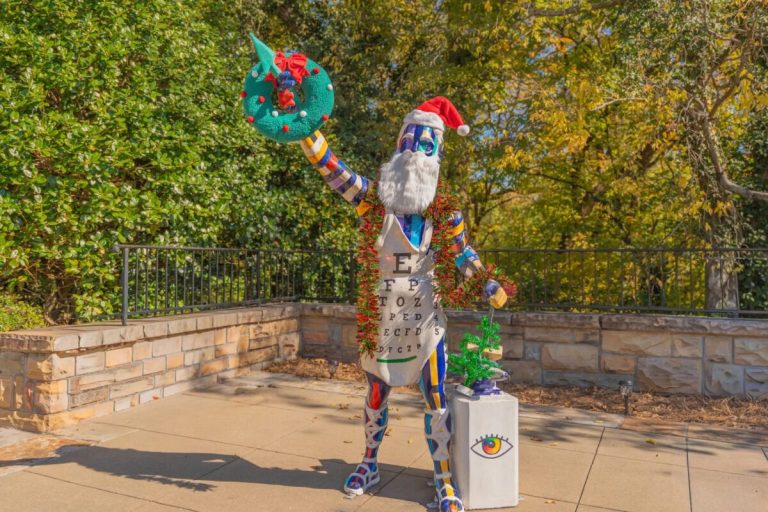Spot the two boys in the photo? They were swimming downstream of a 4000 gallon sewage spill… nobody told them
Reading time: 4 minutes

Can you spot the two boys in the picture?
Imagine a hot muggy Alabama summer day. Your sons are playing at the local “swimming hole.” Everything is normal. Your boys are loving the fresh clean water in a creek where hundreds, if not thousands of children in your community go swimming to cool off all summer long. Fun times.
You snap a quick picture of the boys hiding in the midst of falling water along a dam on the creek.
Now, imagine later in the day you learn that their health was in danger. Four thousand gallons of sewage was spilled into the creek upstream from where your boys were swimming. Virtually nothing was done to notify people, including your children.
That’s not a typo. 4000 gallons of sewage. No warnings. No signs. No use of social media, radio, TV or even a newspaper article.

Not possible? Below is an excerpt of the story on page 10 of the petition submitted by nine water protection groups to the Alabama Environmental Management Commission requesting the Alabama Department of Environmental Management (ADEM) start developing rules to better notify the public about sewage spills.
“For example, on July 22, 2015, more than 4,000 gallons of sewage overflowed from the Pelham Wastewater Treatment Plant and into Buck Creek, a 17.3-mile-long tributary of the Cahaba River that is a popular destination for swimming and recreation Other than a Pelham plant manager who went out and asked a few children to get out of the creek at Helena’s Amphitheater Park, a popular swimming site, there was no public notification of the spill to keep residents from swimming, according to David Butler, Cahaba Riverkeeper. Butler, with Dr. Shaun Crawford, was already near the site of the spill performing routine water testing.
Crawford’s two children unknowingly swam nearby. As a result of the spill, the test results showed “[heavy, heavy contamination] … You would absolutely not want to be in that water,” according to Butler.
Read the entire 40+page petition – here

This week, the nine water protection groups also released an interactive map showing all of the sewage spills that were reported to ADEM during the 2016 calendar year. The numbers were staggering.
1271 spills in 2016
The groups developed the map to educate the public and to make the case for better public notification of these spills. The map is an easy-to-use tool which allows the public to see what spills were reported in their neighborhoods, communities and favorite recreational waterways during 2016.
According to the news release issued by the groups, the data underlying the map indicates that between 28.8 million gallons and 46.2 million gallons of sewage overflows were reported in 2016, not including the 9% of spills reported that did not include a volume estimate. The true number of sewage spills that occurred across Alabama in 2016 is even higher than the map indicates, as the data reported was incomplete and there were countless recurring spill locations which were not reported, as is required by law.

Furthermore, over 28% of sewage spills, the operator admitted it did not verbally notify ADEM within 24 hours, also as required by regulation. For 23% of spills, no effort was reported by operators towards notifying the public despite the fact “immediate notification” of the public is currently required by regulation.
The Environmental Management Commission will be deciding whether to enter into “rulemaking” to consider strengthening the sewage spill notification rules. That meeting is on Friday, April 21st.
Black Warrior Riverkeeper’s Nelson Brooke best summed up why the sewage spill right to know rule needs to be strengthened.
“Alabamians regularly swim, fish, paddle, and recreate in streams, rivers, and lakes. We deserve to be notified when sewage is spilled in our communities and in our water, so we can keep our family and friends healthy and safe. It is high time for adequate regulations in Alabama, and full enforcement if they are not followed.”
Along with the map and formal petition, the conservation groups have also asked the public to support and sign-on to a “Sewage Spill Right to Know” petition.


![3 facts to know about Alabama’s unique Pinhoti Trail [MAPS] 3 facts to know about Alabama’s unique Pinhoti Trail [MAPS]](https://wp.fifu.app/bhamnow.com/aHR0cHM6Ly9iaGFtbm93LmNvbS93cC1jb250ZW50L3VwbG9hZHMvMjAyNS8xMi90ZXJyYXBpbi1sYWRpZ2EtcGluaG90aS1jaGVhaGEtMTE0LTEyMDB4OTYwLmpwZw/430278ff9d1a/3-facts-to-know-about-alabamas-unique-pinhoti-trail-maps.webp?w=768&h=0&c=0&p=1574116)
